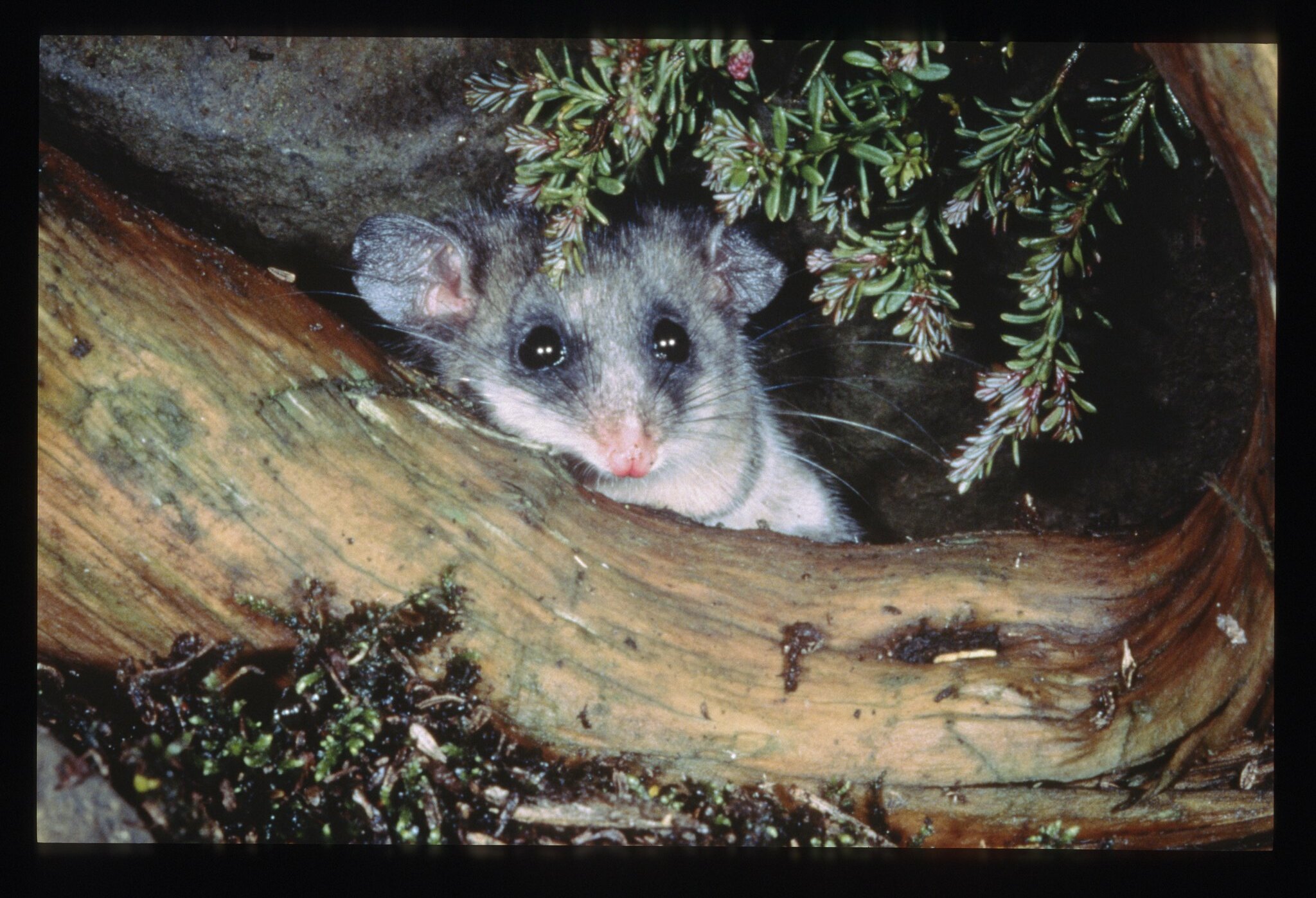Species Information
The Mountain Pygmy-possum was thought be extinct until it was discovered in 1966. These are the largest of Australia’s five pygmy possum species, but the Mountain Pygmy-possum is still small enough (35 - 80g) to fit into the palm of your hand. As their name suggests, these possums inhabit alpine areas across New South Wales and Victoria. In Victoria they are found within the Alpine National Park, Mt Hotham, Mt Buller and Falls Creek Resorts.
Each year they go through a prolonged hibernation over winter of up to 7 months, emerging in early spring to mate. They spend most of their time inhabiting alpine and subalpine boulderfields and rocky screes. Unlike other possum species, they are usually found close to the ground, where they hunt for their main food sources, Bogong Moths and other invertebrates. They will also eat seeds, dupes and berries.
Males and females do not spend their time together. Females will raise up to four young, who will leave the nest one month after they have weened.
 Mountain Pygmy-possum. Photo Credit: Fredy Mercay
Mountain Pygmy-possum. Photo Credit: Fredy Mercay
Threats
There are around 2000 Mountain Pygmy-possum in the wild. Their habitat requirements restrict their distribution, meaning numbers cannot significantly increase. Consequently, genetic loss is a key threat to the small populations and the protection of habitat is critical.
The annual migration of Bogong Moths represents the second largest energy input into the alps, after the sun and is an important food source for Mountain Pygmy-possums during their breeding season. An estimated 4.4 billion moths normally arrive in the south-eastern Australian alpine regions each year, to escape the hotter weather in lowland south-east Australia. Since 2017 very low numbers of Bogong Moths have been migrating to the alps.
Agency partners responsible for the management and conservation of Mountain Pygmy-possums are collaborating to collect critical data, undertake predator control, habitat restoration and interventions to help the possums and to understand the causes and impacts of the reduced numbers of Bogong Moths. The Mountain Pygmy-possum Operational Contingency Plan 2019-20 has been developed by DELWP, together with Zoos Victoria, Goulburn Broken and Northeast Catchment Management Authorities, Alpine Resort Management Boards, Parks Victoria, Traditional Owners, scientists and community groups.
Mountain Pygmy-possums rely on a number of food sources other than Bogong Moths and are so far demonstrating their resilience and continuing to recruit at relatively normal levels. DELWP is working with universities to develop population modelling for better decision making and initiating research projects into Bogong Moth ecology. This is a great example of how working together can achieve great outcomes for threatened species.
What else is being done?
Since its rediscovery there have been a number of measures taken to help this species. In regard to habitat, these include:
- Weed control, revegetation
- Protection of habitat through fencing and restricted use
- Creation of boulderfield to emulate habitat at Mt Buller
- Predator control
To combat the loss of genetic diversity as a result of small population size, a successful genetic rescue was undertaken at Mt Buller on the mid 2000's, through the translocation of males from Mt Hotham.
DELWP has worked with partners to build a corridor to provide a safe passage under the Great Alpine Road at Mt Little Higginbotham, known as the "Tunnel of Love". Other tunnels and corridors have been constructed at Mt Hotham/Falls Creek.
Zoos Victoria holds a research and breeding population at Healesville Sanctuary.
Efforts to save the species are being supported by a $200,000 grant through the Victorian Government’s Biodiversity On-Ground Action Icon Species Grants program.
The recent observation of low Bogong Moth numbers is having a negative impact on the breeding success of Mountain Pygmy-possums. DELWP is coordinating a project in partnership with land managers, government agencies, Traditional Owners and community to better understand the problem and to implement urgent action.
Page last updated: 19/09/24